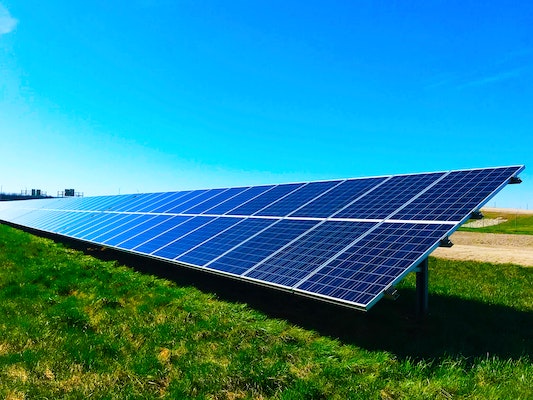Maryland has the most significant solar, specific carve-out of any state at 14.5% energy generation sales by 2028 (1) – the majority of which will be produced through utility-scale solar operations. Utility-scale solar is a solar energy generating system that sells electricity through power purchase agreements or into the wholesale electricity market (2). Utility-scale solar facilities are usually owned by a generation company and require a Certificate of Public Convenience and Necessity (CPCN) to be developed and connected to the grid (2).
Although there are mandatory considerations and research-based claims to prioritize solar development on non-farmland, that has not been the case in Maryland and other states. In Maryland, only one of the currently built utility-scale solar projects is not on “Prime Farmland” or “Farmland of Statewide Importance,” as defined by the Natural Resources Conservation Service (NRCS). More specifically, 44% of utility-scale solar acres developed are on “Prime farmland,” 48% on “Farmland of statewide importance,” and 8% on “Not prime farmland.”
Producers who own land are acting as rational economic agents, given the estimated additional gross revenue utility-scale solar can generate for the landowner compared to traditional crop rotation gross annual farm profits. In the lefthand column of the following table is the range of annual gross rental rates, less the land payment or land cost[1], a commercial corn-soybean field rotation receives per acre in Maryland[2]. The first row shows the range of utility-scale solar rental payments collected from focus groups and leases. The most likely outcome amongst the ranges of annual gross revenues for a farmer who transitions land from farmland to solar generation in Maryland would be a ~350% increase in gross revenue per acre.

The ambitious renewable energy generation goals of Maryland, paired with the financially attractive offers landowners are receiving, have and look to continue to result in the development of utility-scale solar generation facilities on farmland. The continuing increase in renewable energy generation, like large-scale solar generation, will likely result in the loss of farmland nationwide. It would be advantageous for the Southern region to conduct outreach and research to determine the impacts of farmland loss on renewable energy generation.
This work is supported by the Agriculture and Food Research Initiative (AFRI) program, grant no. 2020-68006-31182/project accession no. 1022637, from the U.S. Department of Agriculture, National Institute of Food and Agriculture.
Any opinions, findings, conclusions, or recommendations expressed in this publication are those of the author(s) and should not be construed to represent any official USDA or U.S. Government determination or policy.
- Renewable Energy Development and Siting, (2020, August 14). Governor’s Task Force on REDS –Final Report. Retrieved November 18, 2022, from https://docs.google.com/presentation/d/1F4wXH9XD9Tbozab6gpuhLg4tmuGJSw52/edit#slide=id.p13
- Maryland Public Service Commission. (2022, October 7). Solar in Maryland – Maryland Policies. Electricity – Renewable Energy. Retrieved November 18, 2022, from https://www.psc.state.md.us/electricity/renewable-energy/solar-in-maryland/
[1] The land payment or cost is assumed to be the same per acre between farmland and land developed into solar fields
[2] Derived from University of Maryland Extension Enterprise Budgets (https://extension.umd.edu/programs/agriculture-food-systems/program-areas/farm-and-agribusiness-management/grain-marketing/crop-budgets)
Thilmany, Elizabeth. “The Potential Implications of Large-Scale Solar Development: A Case Study on Maryland’s Agricultural Industry.” Southern Ag Today 2(49.5). December 2, 2022. Permalink

